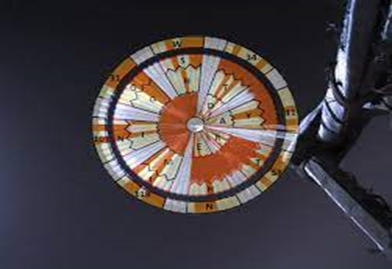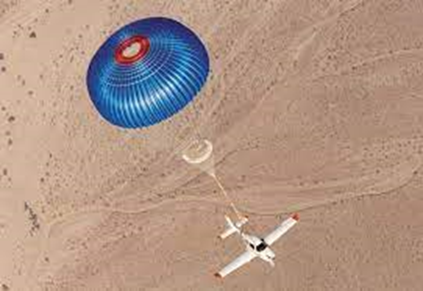
This article is about learning how to “Understand parachute equipment so you can avoid and survive dangerous situations”!
Important gear concepts exist and are always valid, regardless of who makes the gear, where it is used or what someone is telling you about it!
The best way to solve a problem is not to get in a situation where you are forced to solve one, but if you do, you still need to know what to do. How can we do that? The answer is- understanding the equipment and knowing what you can do with it.
Example- being aware that the Reserve pilot chutes can experience spring lock/pilot chute partial malfunction/, will prepare you for the moment if this happens. What can you do in this situation?
There is no one else to rely on up in the sky except you, with your knowledge, skills, and experience. Understanding the equipment can help you avoid and resolve situations.
Equipment concepts have been around since parachutes came into existing and they are the principals that define how and why equipment is designed, manufactured, and used. Therefore, they are independent of arbitrary opinions and politics.
Equipment
1. Must be a Mechanical system
2. Must be Functionally sound
3. Must be Safety compliant
Do these concepts feel familiar in any way?
They are pretty much the principles you follow on every jump to ensure the equipment is safe while doing your checks, post deployment procedures, flying the canopy, etc. etc. All these actions ensure that 1. The mechanical system/parachute/ is 2. Functional and 3. Safe!
This particular article will look at what are the factors defining the parachute equipment as a Mechanical system.
Parachutes need proper environment/atmosphere, gravity, fluids resistance etc./ to work. Even though they were designed on Planet Earth, parachutes successfully worked on Mars, using the same principles https://mars.nasa.gov/news/8875/testing-proves-its-worth-with-successful-mars-parachute-deployment/

The Parachute used for Mars landings

Airplane equipped with emergency parachute
What defines a Parachute as a Mechanical System?
1. The system needs to comprise all its parts!
Learn what are the parachute components of your main and reserve and how they work. Are they all what they should be? Here you can start with your parachute manual!
“Parachute assembly normally, but not exclusively, consists of the following major components: a canopy, a deployment device, a pilot chute and/or drogue, risers, a stowage container, a harness, and an actuation device (ripcord)”. All the parts mentioned are vitally important for the parachute operation. If the pilot chute gets separated from the D bag on deployment, it won’t be able to extract the main from the container causing a malfunction. However, sometimes parachutes can operate with missing parts -D bag can be extracted and thrown on the wind flow manually if the PC is in tow; you can pull the RSL lanyard on some models for a reserve activation. As you can see, knowing all the parts and their function will give you the advantage of extra ability to avoid and solve problems.
When you inspect your gear, you check if all the visible parts are present and connected. Sometimes you are not able to inspect all the parts inside the container, for example when someone else has packed for you but you trust your packer or rigger. That’s where teamwork and cooperation come in to play!
2. The system is real- nothing magical happens up there
Investigate the reasons for accidents and learn the reasons that caused them. Consider what you would have done with your gear to avoid each one of them! Consult with knowledgeable person!
Parachute is a physical system; laws of mechanics and aerodynamics apply. Higher windspeed under the canopy creates lift. Pulling a toggle, creates resistance on this side of the canopy, and it turns in the same direction caused by that increased resistance. Uneven body position contributes to line twists/mains or reserves/, high speed on deployment causes hard openings. There are reasons for everything that happens with the equipment and the consequences. Sounds logical, right? Learn what causes line twists so you can fly your openings and avoid them, learn what causes hard opening so you can pack better and avoid them, learn which canopies fly better in turbulence and get one of them, learn what causes pilot chute in tow and you can avoid them.
Have you personally investigated all accidents that have happened to learn what to do to protect yourself in the future? Really, have you done that, at least for the fatalities you have heard about recently? If you have not- you have holes in your knowledge how to save your life. Take a minute to think about it now! Why haven’t you done that? There are officials that should be able to answer all your questions and are also people on the field that have a lot of answers.
3. Mechanical systems malfunction, both- main and reserve.
Learn what has caused mains and reserves to malfunction or would. Then, think what you can change or do to avoid malfunctions!
Yes, parachutes malfunction, both mains, and reserves. Understanding the equipment can help you identify potential malfunction and reduce the anxiety.
Before jumping, we should know how the canopy we jump would react in different situations. Knowing the difference between 7 and 9 cell canopies, we can anticipate what surprises we can get on opening or while turning with them.
What settings enable your canopy’s optimum glide ability- flying it with rear risers, on 50 % brakes, how effective they are downwind, into the wind? Knowing all that before returning from a long spot can keep you out of troubles.
Most reserves are usually built as 7 cell F-111 square canopies. Why is that? You should know what could contribute or cause reserves to malfunction and avoid these situations. In case the reserve malfunctions, you should know what is possible to do to rectify the situations. Take a minute to think about your options if this happens. What is the design and materials of your reserve? If you have questions- ask someone that knows, not someone of authority that thinks they know.
Ask yourself- are my knowledge, skills, and experience where they should be? Am I doing everything I can to improve them?
It is not manufacturer’s job to tell you everything you need to know, so they don’t, they are companies and have different priorities. Often, federations and associations can be slow with bringing to you the education you need. More than 80% of fatalities are result of human error, don’t become part of this statistic. Educate yourself!
In skydiving there is always someone that knows more than you! Find them and ask! Start with:
Every time, looking or handling parachute equipment, think about it in the context if- 1. The mechanical system/parachute/ is 2. Functional and 3. Safe!
Understanding the equipment will enable you to know what to do in situations you don’t know what to do! A real advantage when it is time to save yourself.
To be continued!
Kras Bankov

There are no comments to display.
Join the conversation
You can post now and register later. If you have an account, sign in now to post with your account.
Note: Your post will require moderator approval before it will be visible.